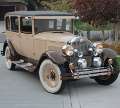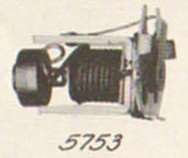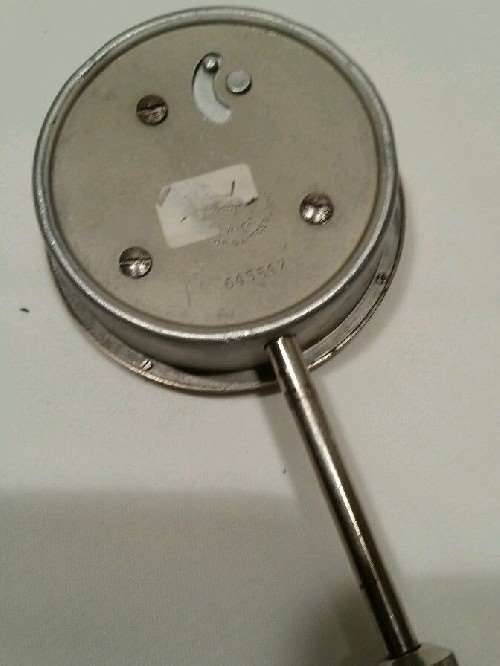|
If the top goes down, the value goes up...
|
||||
|---|---|---|---|---|
|
Just can't stay away

|
So says the popular adage. WAY up in fact. My question for the community in 2015 though, is why is this still true to the extreme extent demonstrated by the market?
Using the 1927-28 5th series as an example (for obvious reasons), sedans were among the more expensive available configurations. That they were also the most common speaks to the configuration's pragmatic and aesthetic desirability. That commonality is the oft cited reason for their diminished value among collectors, but the vast majority were long ago shredded and the quantity disparity is now small (I'll have to contact the roster keeper to remind me of the exact numbers). I do wonder if it doesn't just have more to do with precedent at this point. To be clear, I'm asking about rank and file production cars, not some one of a kind unicorn owned by a movie star (which more deservedly justifies a high valuation). For example, both of these cars are presented with older restorations showing significant wear (despite any creative language their purveyors use): -http://www.ebay.com/itm/1928-Packard-526-Phaeton-/281704558996 -http://www.ebay.com/itm/1928-Packard-526-Runabout/281737133574 The last 526 sedan on ePay, however, which appeared to be in significantly better condition than either of these drop-tops, didn't sell for $30K. I've presented examples of the 5th series, but the same general trend seems to apply throughout the 30s. I'd like to see a dialog about whether these cars really justify a valuation of ~3X their hardtop counterparts, and why. My motivations are clearly biased, but I think it's a legitimate question regardless. It's all the same running gear after all! I've donned my flame retardant suit, made some popcorn, and anxiously await your replies :)
Posted on: 2015/7/2 11:07
|
|||
|
||||
|
Re: 1929 front mount water pump
|
||||
|---|---|---|---|---|
|
Just can't stay away

|
It's been nearly a week, so hopefully you have this sorted, but I'll add another data point anyway... I checked the pump on my 5-26 this evening (which appears identical to your pictures), and as with DavidM's vehicles, no such hole is present on mine either.
Posted on: 2015/7/1 22:37
|
|||
|
||||
|
Re: 28 Packard 526 Ruabout headlight bulbs
|
||||
|---|---|---|---|---|
|
Just can't stay away

|
rrhorton, try Richard at White Glove (608-780-8229). In fact, it looks like he has a pair on ePay right now...<br /><br />http://www.ebay.com/itm/Drum-Lights-Packard-/221775683126?hash=item33a2dc5e36&vxp=mtr<br /><br />If that doesn't work, you could always have Brass Auto make you a pair (www.brassauto.com). Both solutions are very expensive, but what in this hobby isn't?
Posted on: 2015/5/19 15:53
|
|||
|
||||
|
Re: 28 Packard 526 Ruabout headlight bulbs
|
||||
|---|---|---|---|---|
|
Just can't stay away

|
Remember too that Packard switched from parabeam to depress beam in the middle of the 5th series. Depending on when your car was made, it could have either. E.g., my early 526 built in '27 (despite my username) has parabeams.
Posted on: 2015/5/17 15:24
|
|||
|
||||
|
Re: 1928 6 cyl lifter cover gasket
|
||||
|---|---|---|---|---|
|
Just can't stay away

|
Thanks for the clarification. Perhaps I'm missing those 3 standoff tubes after all. My cover just has 3 holes in it, and the 3 "bolts" that secure it are really long-shank caps nuts that grab 3 studs in the block. As long as they are, I believe I was misconstruing those for the tubes others have described, but there's nothing with any sort of flare or flange that would prevent a gasket from seating against the cover, or more importantly that prevents the bolts being tightened to the point that they seriously warp the cover plate.<br /><br />After the last valve adjustment, I fitted some o-rings to seat against the cap nut flanges and outside of the plate, then torqued them down just prior to the point the plate started warping, but that's clearly not adequate. Are these standoff tubes affixed to the cover plate itself?
Posted on: 2015/5/15 0:55
|
|||
|
||||
|
Re: Circuit Breaker Relay ('28 5-26)
|
||||
|---|---|---|---|---|
|
Just can't stay away

|
Nevermind. Found the wiring diagram elsewhere. Looks like it connects in series after the ammeter and that everything except the ignition (and generator and starter of course) is supposed to route through it. I think I'll leave it there, but forego using it.
Posted on: 2015/5/14 12:40
|
|||
|
||||
|
Re: 1928 6 cyl lifter cover gasket
|
||||
|---|---|---|---|---|
|
Just can't stay away

|
Sorry to resurrect an old thread, but it appears I do have an oil leak from the valve adjustment side cover. I thought it was coming from the choke lever shaft seal on the oil bypass valve, but it upon closer inspection I can see that it isn't.
As mentioned earlier, all my car has is the outer plate with a very thick perimeter cork gasket and crush washers around the 3 bolts. The outer plate is just thin sheet metal, and it's not possible to torque it down enough that it puts sufficient pressure on the gasket to prevent leaks without warping the plate. Can anyone provide details or a picture (hopefully) of the inner plate and flared bolts mentioned earlier in the thread? I can't find anything other than basic descriptions in the the relevant parts lists. I'd like to know the material and thickness (dimensions are probably too much to hope for) so I can CAD up a reproduction and CNC it. Thanks!
Posted on: 2015/5/14 12:23
|
|||
|
||||
|
Circuit Breaker Relay ('28 5-26)
|
||||
|---|---|---|---|---|
|
Just can't stay away

|
I have my instrument cluster out again for some freshening (working clock and speedo finally!), and re-discovered a disconnected and seemingly original device resembling a relay mounted to the back panel cover behind the clock. There's no parts list for my '28 5th in the library, but the '27 Eight parts list includes what looks to be the same part listed as p/n 5753 and referred to as a "Circuit breaker relay".
The problem I have is that the '27 parts list doesn't include a wiring diagram. The '25 six parts list in the library does, but that relay isn't there, so it must have been added in the 4th series. Can anyone tell me what it does (I have assumptions only) and how to correctly wire it in? I hit it with 6V, and it does still seem to work. When I re-wired the car, I hid modern circuit breakers in the battery box, and installed a fuse panel, so I suspect it's probably unnecessary at this point. I'd still like to know how it was used so I can decide whether to preserve its original function. Finally, the thing is mounted directly behind and less than an inch removed from the clock. It seems like a particularly bad idea to have mounted a big electromagnet that close to a sensitive mechanism filled with whirring, finely balanced ferrous gears and wheels. Is anyone aware of these screwing up the clock? I'm especially sensitive to that, as mine is only just now actually working! Thanks! Attach file:  (3.63 KB) (3.63 KB)
Posted on: 2015/5/14 11:03
|
|||
|
||||
|
Re: 1923 Packard
|
||||
|---|---|---|---|---|
|
Just can't stay away

|
Ken,
As a follow-up to what DavidM said about the clock, let me suggest a few little tricks I used to get my clock working inexpensively. First of all, Packard sourced the afore mentioned oval clocks from two manufacturers for our cars: Waltham and Jaeger. Of the two, the Jaeger is a far superior part. The Waltham clocks used unstable pot-metal housings that swell, split, and crumble, where the Jaegers are steel. Secondly, if it's a Packard part for sale on eBay, a seller's price seems to go up at least 5X. I've seen working examples of this clock posted for north of $700, and never seen a functional one for under $300. So buy a broken one :). They can often be had for under ~$50. All you really need is the oval faceplate and housing. The movement inside is a very common for that era Jaeger LC1, and was used in many more "pedestrian" cars. You can identify clocks with that movement by the two small screws retaining the faceplate on the front, 3 screws in a triangular arrangement securing the movement to the housing, and the position of the speed adjustment slider window (see pic). Find a cheaper, working, non-Packard article and pull a switch-a-roo! The only tool required is a small jeweler's screwdriver for the faceplate and winding shaft screws. You'll save hundreds and still have a 100% authentic clock. I got mine working for around $80 :) Case in point: http://www.ebay.com/itm/JAEGER/311342653303 http://www.ebay.com/itm/111662649533
Posted on: 2015/5/11 8:02
|
|||
|
||||









